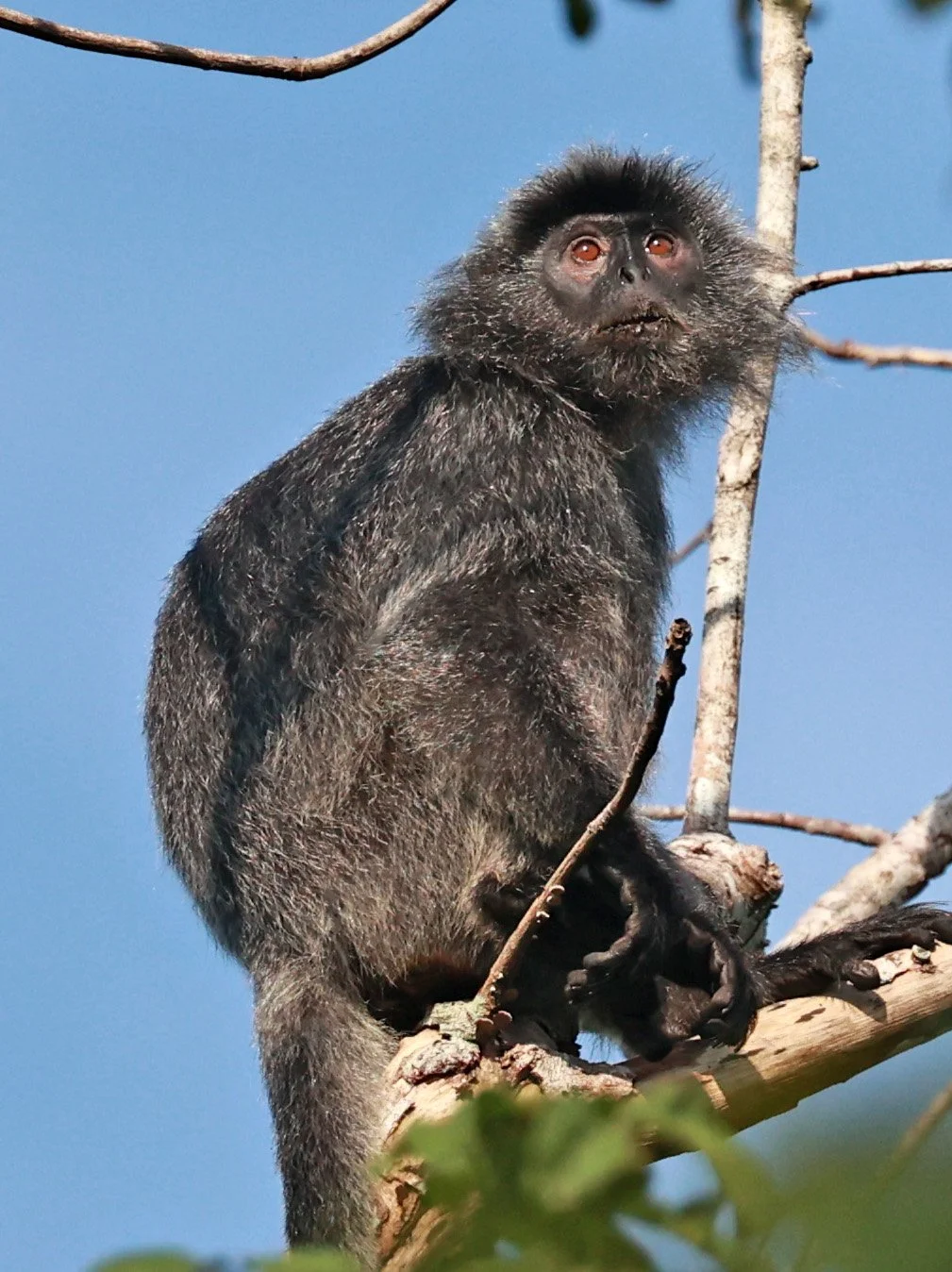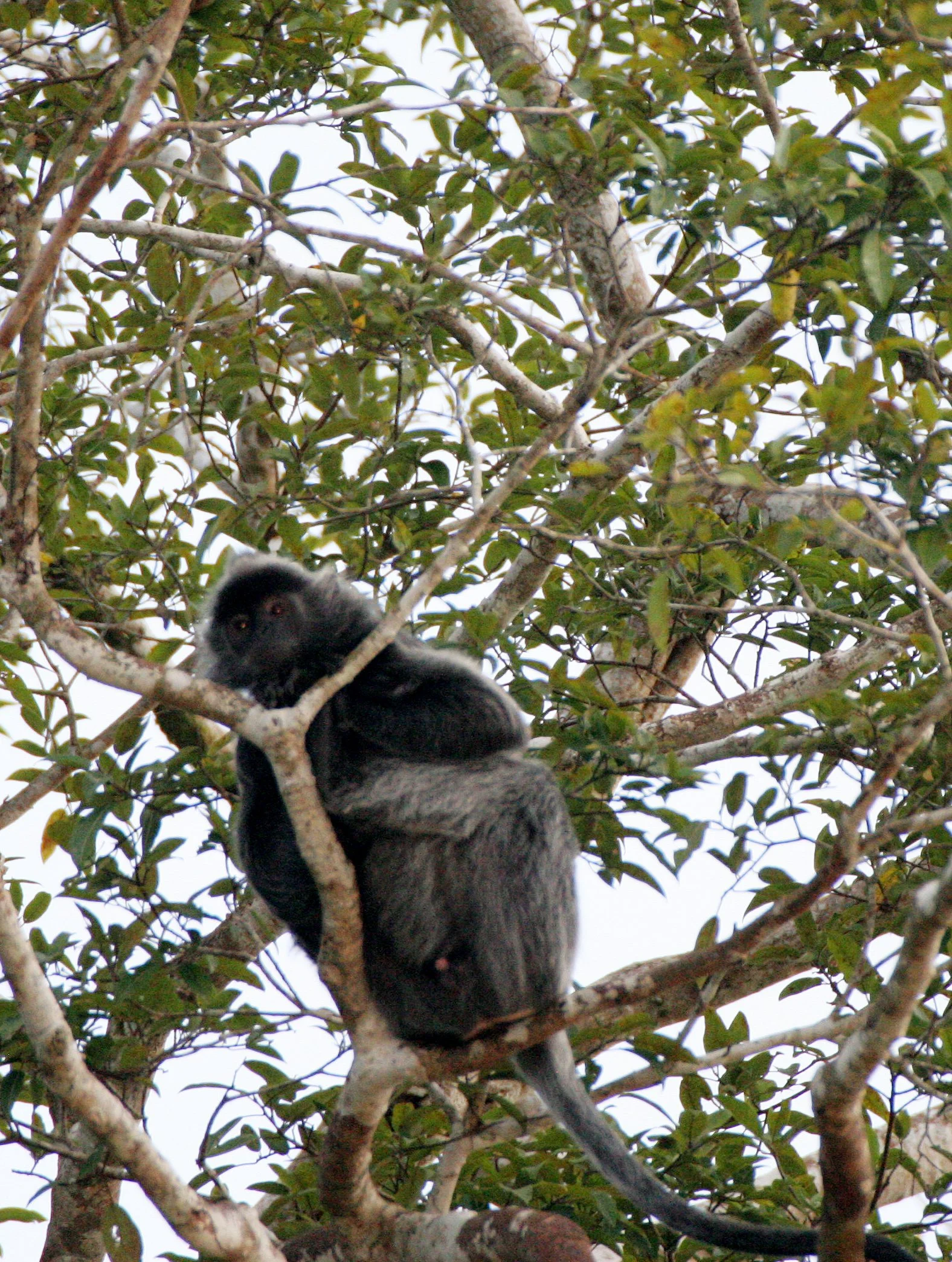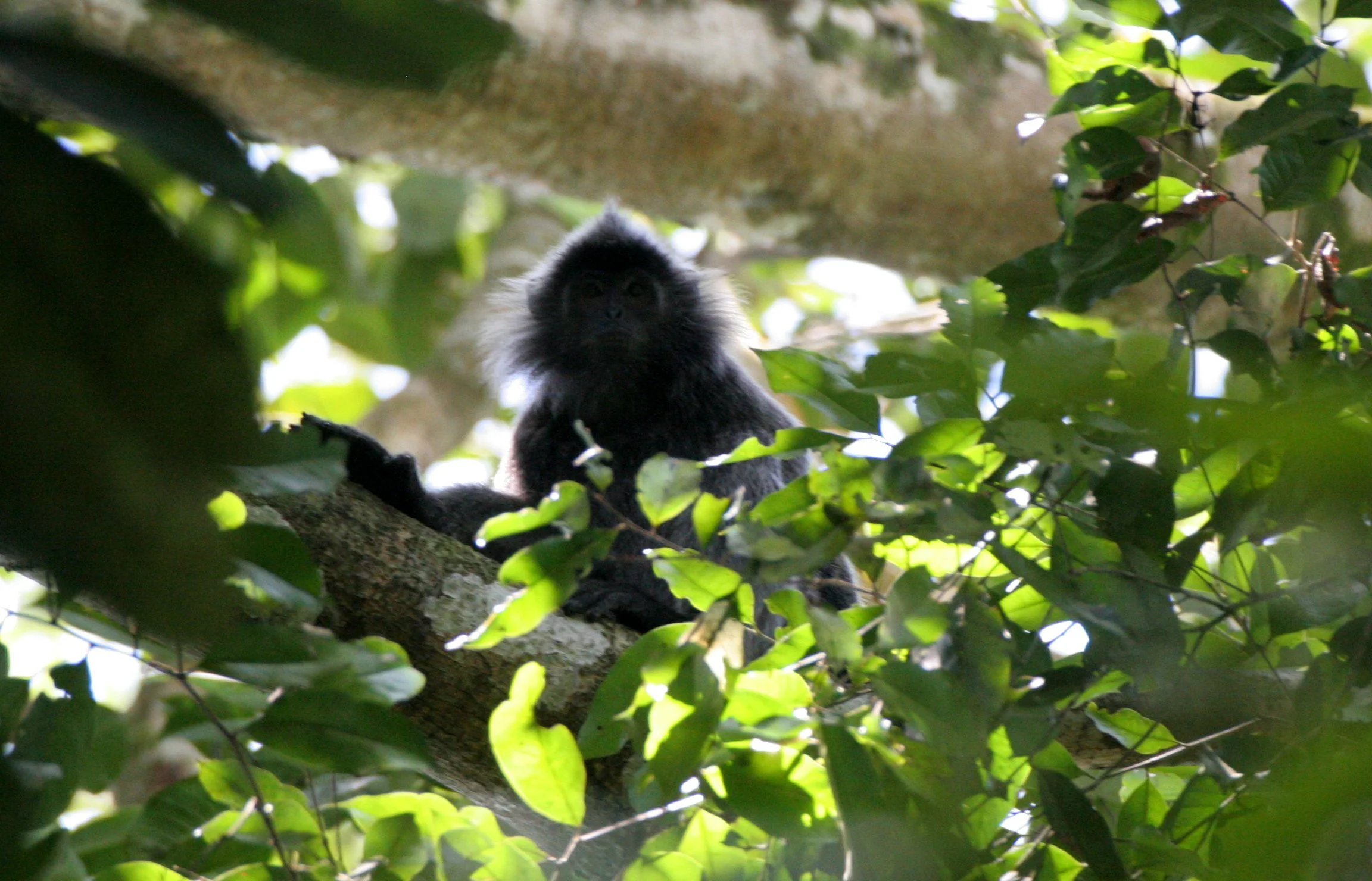
Silvered or Silvery Langur
The silvery lutung (Trachypithecus cristatus), also known as the silvered leaf monkey or the silvery langur, is an Old World monkey. It is arboreal, living in coastal, mangrove, and riverine forests in Peninsular Malaysia, Sumatra, and Borneo.
The silvery lutung is a medium-sized monkey with a long, non-prehensile tail. It has grey-tipped, dark brown or black fur, giving it a uniform silvery appearance. Unlike some related species, there are no paler markings on the face or body, except for a patch of whitish hair on the groin of females. A crest of fur runs along the top of the head, and the hair on the cheeks is long, often obscuring the ears. The hands and feet are hairless, with dark coloured skin, and have opposable thumbs and toes.
Females range from 46 to 51 centimetres (18 to 20 in) in head-body length, with an average weight of 5.7 kilograms (13 lb) and a tail length of 67 to 75 centimetres (26 to 30 in). Males are slightly larger, from 50 to 58 centimetres (20 to 23 in) in length, with an average weight of 6.6 kilograms (15 lb) and a tail length of 67 to 75 centimetres (26 to 30 in).
Like other langurs, the silvery lutung has a large three-chambered stomach to digest the cellulose found in its herbivorous diet. This allows for fermentation of food, and has some similarities with the stomach of ruminants. The intestine is unusually long, even compared to those of other langurs, and has a number of pouches along its length, which carry out further fermentation of plant matter. The teeth have grinding ridges and other modifications to allow the more efficient processing of tough leaves.
The silvery lutung is found across Borneo and Sumatra, as well as in parts of the south-western Malay peninsula, the Natuna Islands, and other nearby islands. It inhabits mangrove swamps and nearby forest regions, and generally avoids travelling far from coasts or rivers.
The number and identity of subspecies of the silvery lutung is currently debated. A 2008 analysis confirms the presence of only two subspecies:
Trachypithecus cristatus cristatus - Borneo, Sumatra, Natuna Islands
Trachypithecus cristatus selangorensis - Malay Peninsula (NOW considered a valid species)
The Malay Peninsula form has been subsequently elevated to a separate species, the Selangor silvered langur T. selangorensis
However, some older sources, such as Mammal Species of the World, as well as some much newer ones such as the 2021 edition of the IUCN Red List, distinguish the silvery lutungs of the Natuna Islands as a separate subspecies, designated T. c. vigilans.
My gallery below has individuals seen in Bukit Lawang, Sumatra and along the Kinabatangan River in Sabah Borneo.

Silvery Langur (Trachypithecus cristatus cristatus) Bukit Lawang Sumatra Indonesia































Silvery Langur (Trachypithecus cristatus cristatus) Sipirok Tapanuli Sumatra Indonesia




Kinabatangan River, Sabah Malaysia Borneo


















































